Sequence viewing > Index - Alternative Photo Emulsions - Resource - ©
Lloyd Godman
Alternative
Photographic Processes - (Hand
made photographic -emulsions and processes)
Techniques
for applying photographic emulsions
Suitable
brushes for the application of the emulsion can differ between the desired
aesthetic effect the photographer is after, the surface of the support
base to be coated and variations in processes.
While
the emulsion can be picked up by dunking the brush in the emulsion in
the normal manner, some workers prefer to pour or drop solution onto
paper with eyedropper or plastic spoon and spread evenly with brush.
For
an even coating a wide foam brush works well. But where broken brush
marks are desired a thick bristled brush works best. Depending upon
the process, usually one coat is all that is necessary.
Two
thick coats may result in dull, silvery or chalky images, which may
or may not be desirable.
Even application:
Many photographers applying these emulsions strive to coat the paper over
the entire surface of the paper all the way to the edge in an even way
where there are no application aberrations. And for some processes like
gum bichromate, two brushes might be used, one to spread the emulsion,
the other to blend the laps evenly. A foam roller can be used to smooth
out the coating, but of you want to retain the brush marks on the edge
only use this in the centre of the emulsion application.
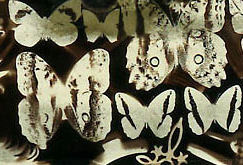
Brush Marks:
However,
for many artists one of the attractions and aesthetic features of alternative
processes is the way the emulsion can be coated onto the paper leaving
a loose edge reference to the rectangular area where the image is to
made. Brushes can be selected with coarse bristles that separate as
the brush runs dry on the paper and create a certain aesthetic. Usually
this is controlled so there is a ragged edge around the area where the
emulsion is applied.
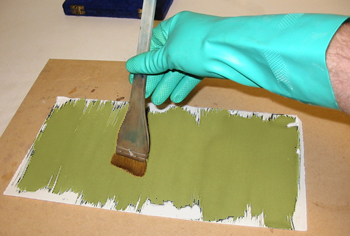 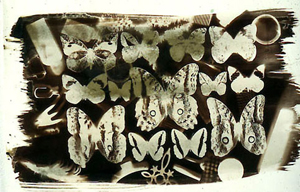
Uneven
application:
The
emulsion can be applied so there are areas not covered which cut through
the final image and leave gaps.
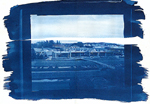 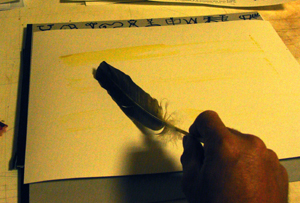
By using the side of a feather, the emulsion can be applied in a manner
where the coverage is very broken.
Emulsion
thickness:
The
emulsion might be applied in various thickness on the paper, thicker
in some places where it is allowed to pool up and thinner in others
where it is brushed out.
Splashing:
In
some situations the emulsion can be splashed or flicked onto the
paper from the brush, but care must be taken to make sure this
is done in a safe manner. |
 |
| |
|
Free Form:
The
application of the emulsion can break the rectangular format entirely
and can actually be painted on the base to form motifs, shapes
or symbols of any desire. More |
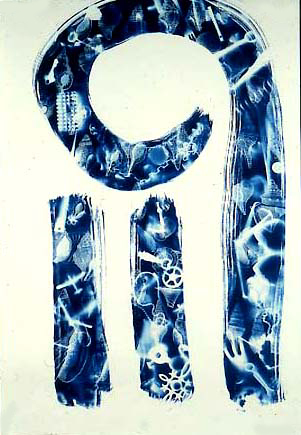 From Aporian
emulsions From Aporian
emulsions |
| Repelling
base:
Notice
the area where the photocopy text has repelled the emulsion.
For
an interesting effect, the paper might be coated with another
material that repels the emulsion. For the Hermetic Arcanum project
with Tess Edwards I took a small book and photocopied the pages
onto an A3 sheet of paper. The Emulsion was then painted on in
the form of various alchemic symbols. In places where the emulsion
was thin the photocopy toner repelled it, producing some subtle
nuances. |
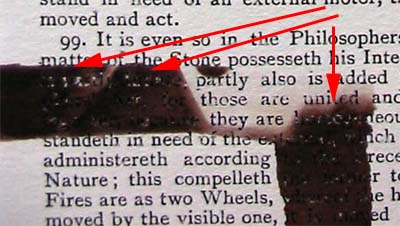 |
However,
applying a liquid emulsion over another medium that is either
water soluble or can migrate and blend with the liquid can produce
undesirable results. For instance applying an emulsion over charcoal
produces a grey wash in the white areas of the image. |
|
Want to learn more? - do a workshop or one on one with Lloyd Godman
|